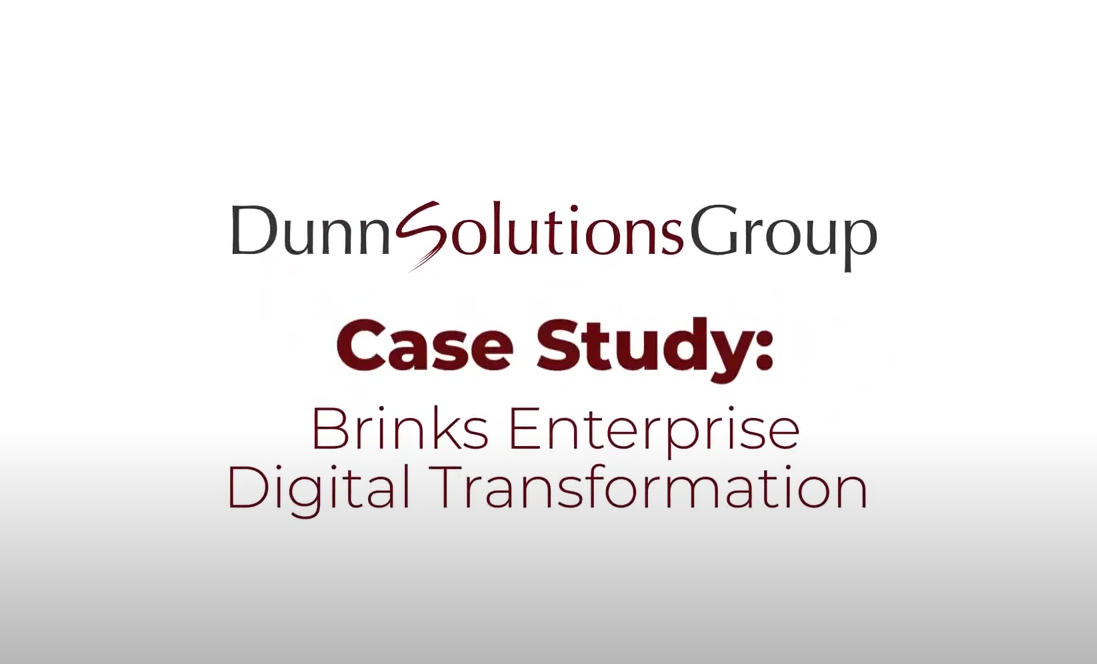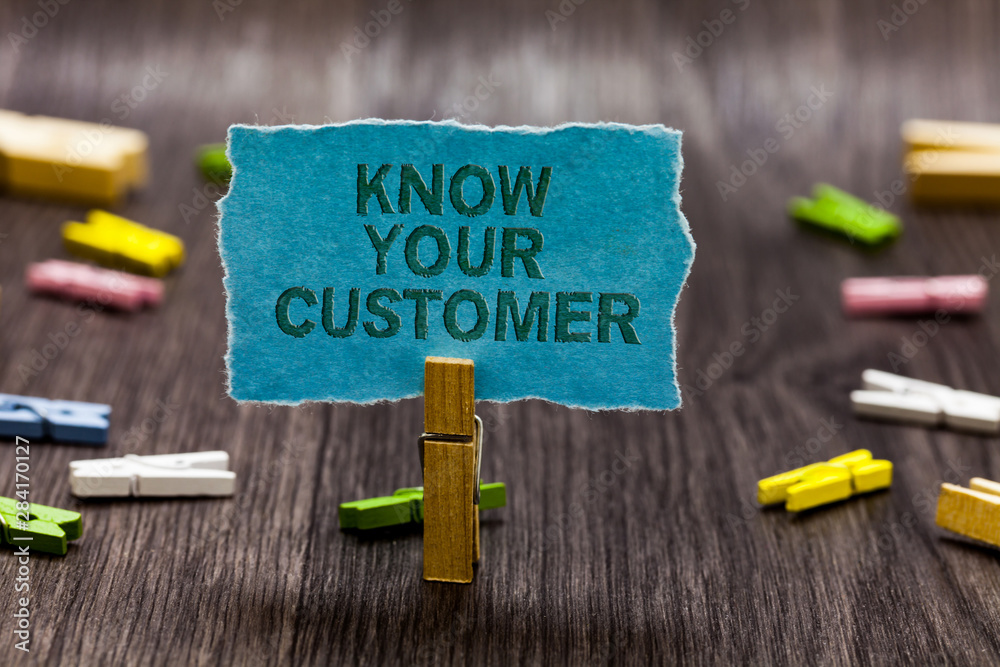
Christopher Freund
1 Year Ago
If you find yourself reading this blog, then you must be curious as to how patient portals are the most effective way of improving patient engagement and making healthcare an easy part of every patients life. Before we dive deeper into portals, let’s answer a simple question: “What is patient engagement?”
What is Patient Engagement?
Patient engagement can be summed up by providers and patients working together to improve health. Patients who are actively involved with their healthcare and decision making tend to live healthier lives and have better outcomes. This kind of engagement can be accomplished through patient portal technology. Portals are a great way to offer patient’s secure online access to their health records, allow users to schedule or cancel appointments with little difficulty and give patients the ability to pay their bills hassle free. Portals also offer providers a way to engage their patients after they have left the doctor’s office. Their patients can send secure and private messages directly to them about health issues without having to make a phone call.
Common Questions About Patient Portals
When considering the use of patient portals, there are a few other popular questions that come to mind:
- Do only young people use patient portals?
- Is my practice big enough to have a patient portal?
- Do patient portals actually make patients more loyal to a practice?
Do Only Young People Use Patient Portals?
Let’s start by debunking the first myth: “Only young people use patient portals.” According to recent studies done by Athena Health, “all age groups are receptive to using patient portals as long as the benefits are clear and the portal is integrated into the care process.”
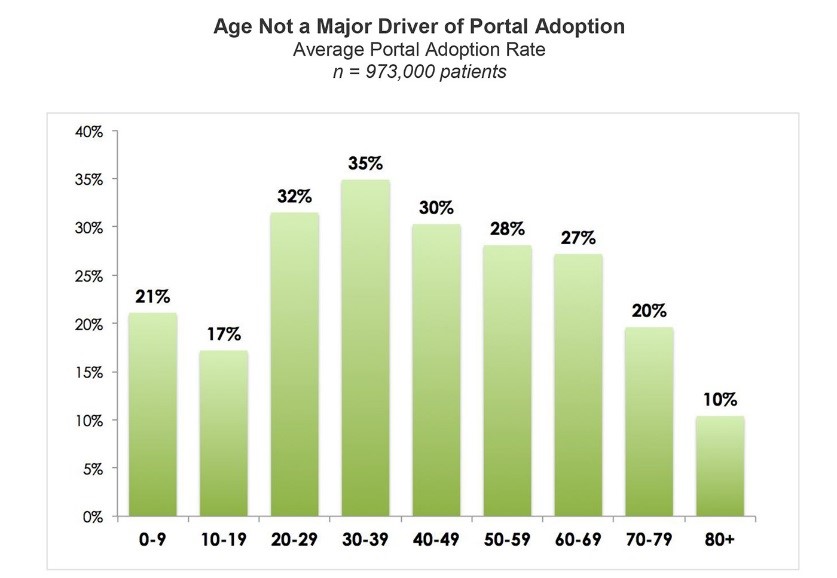
From the graphic above, we can see that patients between the ages of 30 and 39 have a higher rate of adopting the use of patient portals. These statistics are based off the percentage of a practices patients that have used the patient portal or have registered within a 30 day period. While adoption rates do tend to drop off after 70+ years, studies also revealed that older patients tend to use the portals more frequently.
Is My Practice Big Enough to Have a Patient Portal?
The next question most people have about patient portals, “Is my practice big enough to have a patient portal?” Thanks to the studies done by Athena Health, they have found that the practices size does not impact the adoption rates of patients. In fact, they have speculated that smaller practices are more likely to have an on-going relationship with their patients through the patient portal.
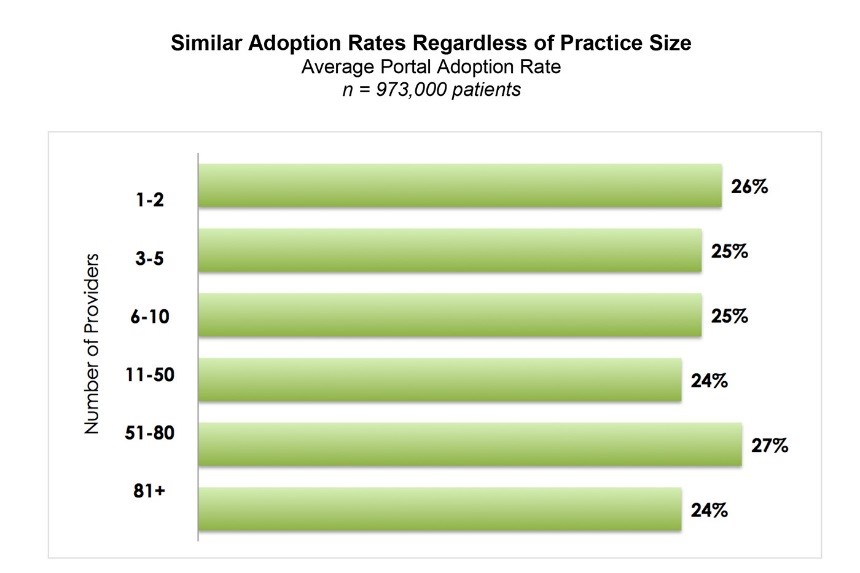
Do Patient Portals Actually Make Patients More Loyal to a Practice?
The final question most people have about patient portals is do patients that use the portal actually return to the practice and become loyal patients. Studies have been done on this as well and it turns out that patients do remain loyal to the practice once they have created an account. From the chart below, we can see a greater number of patients that have adopted the patient portal have visited the same provider within 18 months. High continuity patients, who are patients that visit at least once a year for 3 years, almost doubled with a patient portal.
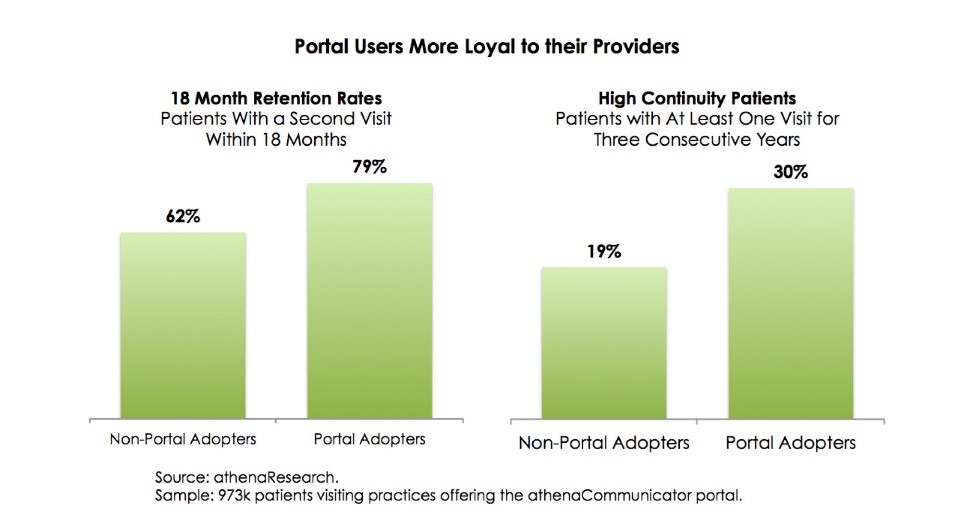
As we can see above, it doesn’t matter the age of the patient or the size of the practice, patient portals increase patient engagement and increases patient loyalty. Patient portals allow users to take an active role when it comes to their health case and build a lasting relationship with their provider.
To learn more about how patient engagement portals can benefit your organization or to get started in your own patient engagement portal project, please reach out to us at info@dunnsolutions.com.

